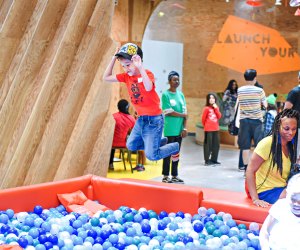Proposition 39: How Can Charters and Other Public Schools Share Space Equitably?

Californians are always talking about this proposition or that, trying to make sense of the way we do politics out here. Proposition 39, because it has to do with school and space for all children, can elicit intense feelings of fear, competition, and defensiveness in parents - and confusion in everyone else. What is Prop 39 and why do public school parents get so worked up about it? We'll attempt to explain the whats and whys of Prop 39, in order to help readers consider how we, as adults, can address an issue we emphasize with our children: how to share and be fair.
OUR LATEST VIDEOS
Proposition 39 was written to ensure that all public school students - whether attending a neighborhood school, a magnet, or a charter - share equally in district facilities. The bargain made when Prop. 39 was passed by California voters in 2000 was meant to ensure that charter school students would be given equal access to district facilities. The law serves to ensure "that public school facilities should be shared fairly among all public school pupils, including those in charter schools." Prop. 39 requires school districts to make "reasonably equivalent" facilities available to charter schools upon request.
The principle behind Prop. 39 is one of equity and fairness for all public school students. Because charter school students are public school students, Prop. 39 represents the pragmatic embodiment of that principle in the most publicly visible sign of a successful school - the building.
It all sounds pretty simple: LAUSD owns a lot of real estate throughout the city. LAUSD students have a variety of public school choices: neighborhood, magnet, or charter, oh my!. All public school students in the LAUSD boundaries must be provided with adequate space. If a school has enough space to house a neighborhood school and a charter school, what's the problem? The problem is that what LAUSD calls empty rooms sometimes includes parent centers, computer labs, and other spaces that are the very things that neighborhood school parents consider to make their schools above-average. The result is that neighborhood school families get resentful of charter school families. On the other side, families who choose charter schools and are working hard against intense odds to create new and exciting models of public education on less money, with more strict regulations, and very little district support, feel it's unfair that they have to pay high rents for non-district facilities on top of all the rest of it.
Recently, struggles over school space have been in the news. Less commonly heard about are the positive co-locations - schools that enjoy sharing resources and realize that co-location can equal collaboration, with the charter school and neighborhood school each bringing something unique to the table. The co-locations that work the best are ones in which parents, administrators, and teachers, decide to meet and plan together, come up with goals and expected outcomes, then work to meet them. It's not dissimilar to what works with children - making goals and working toward them. And speaking of children, how can we expect to teach them to share, to play fair, and to respect all people if we can't do it ourselves.
In response to some of the latest struggles that have resulted in bad behavior on the part of both parent groups and district employees, and with the goal of creating more positive co-location situations, LAUSD is offering a conference focusing on Best Practices for Co-Located Schools on June 2. The event is a chance to network, gather best practices, and learn how other schools are addressing co-location challenges.
The very existence of a conference acknowledges that Prop 39 has not been well executed up until now. Let's hope LAUSD is serious about remedying that situation and following the true intent of the law, which is to make sure all children in LAUSD boundaries - neighborhood and charter alike - have equal, adequate spaces in which to learn.

























